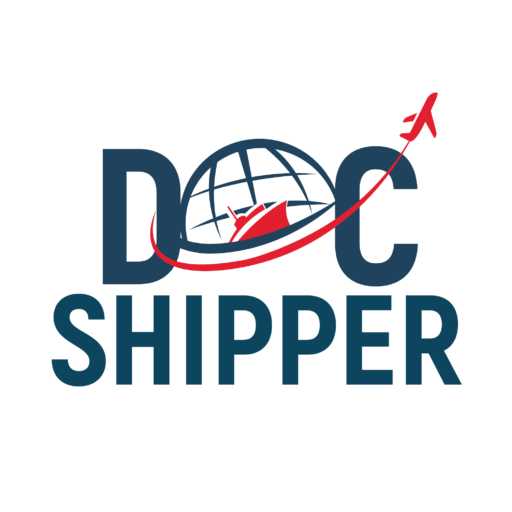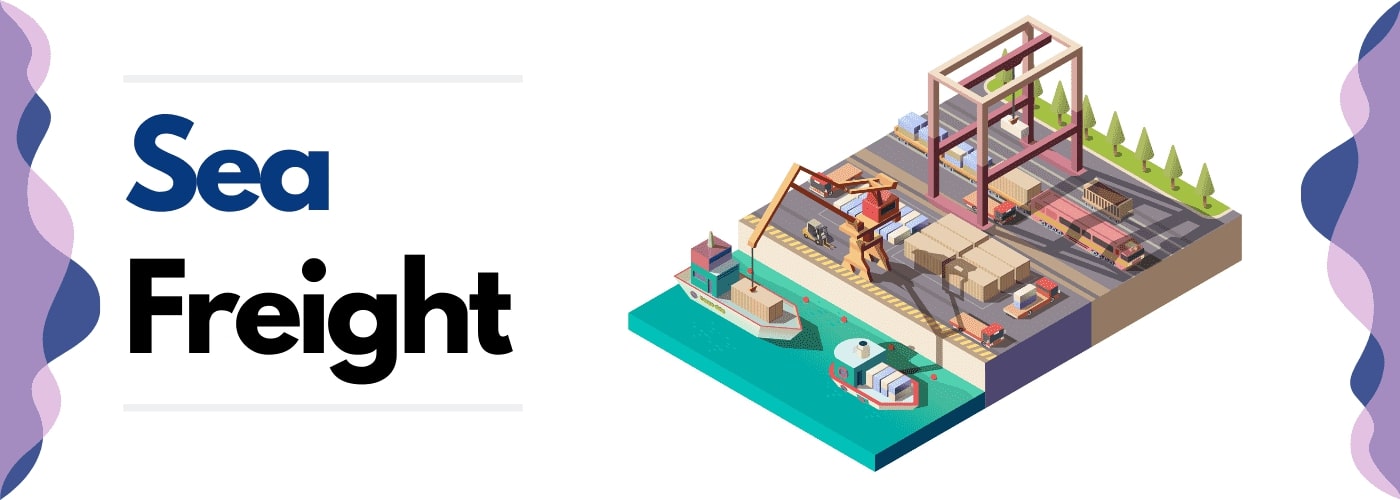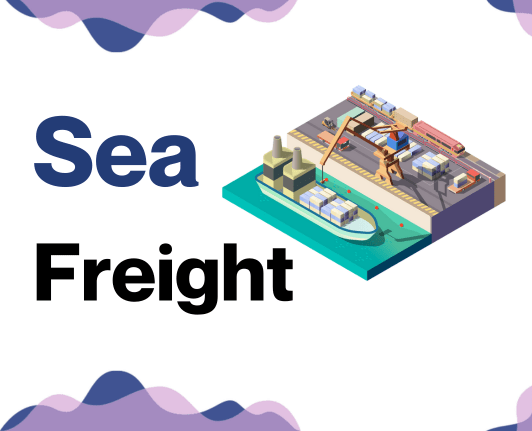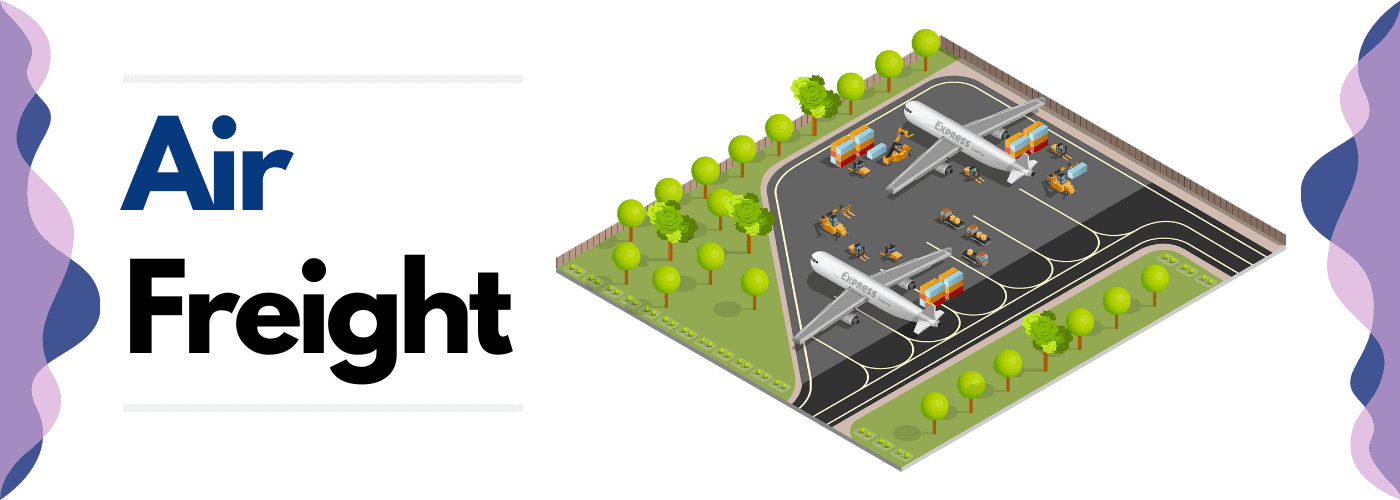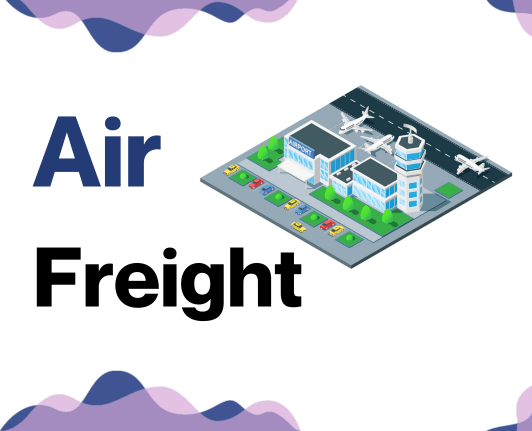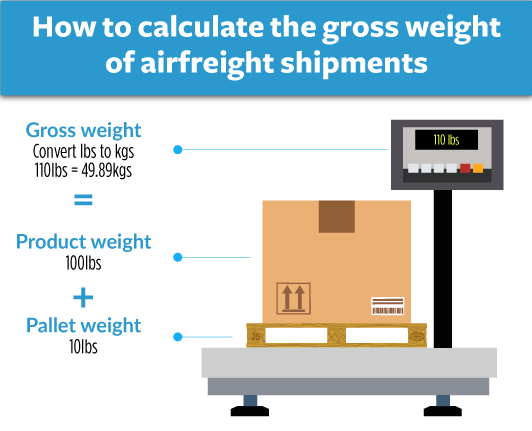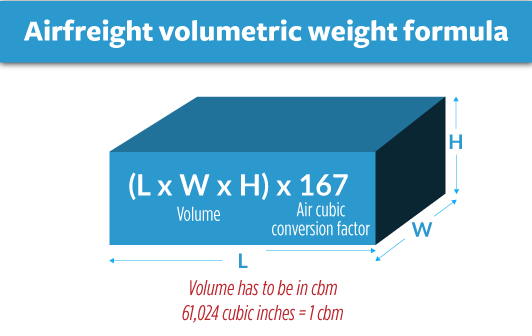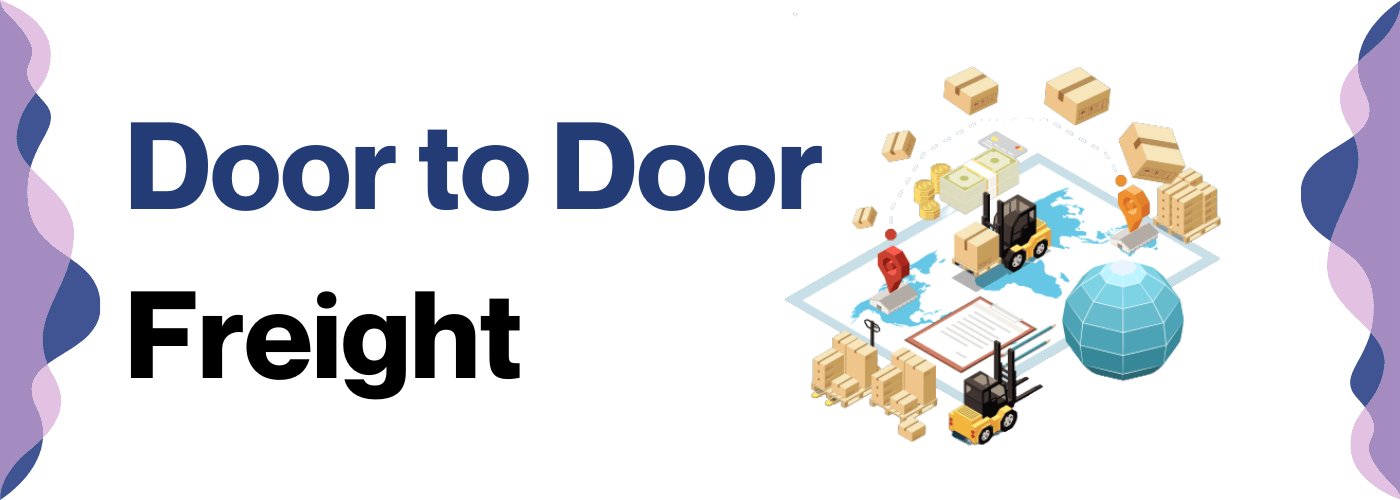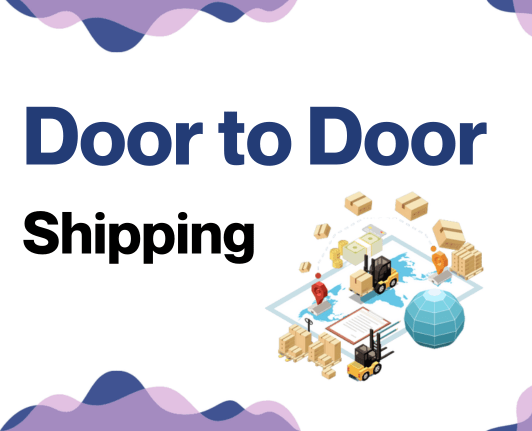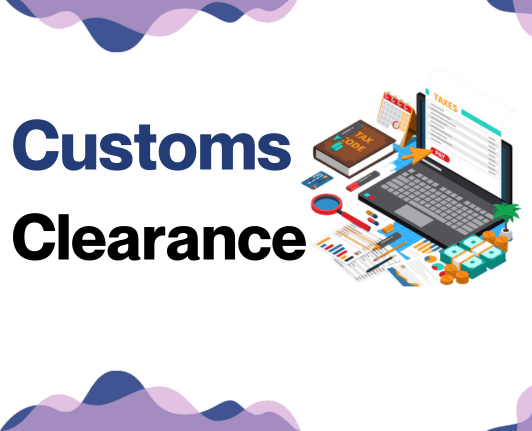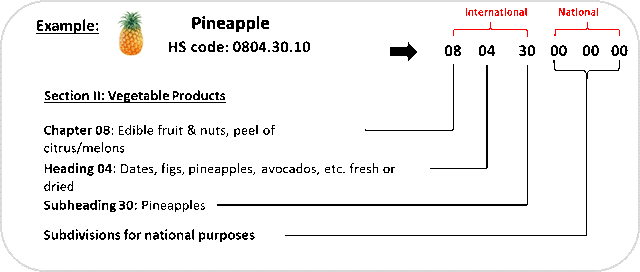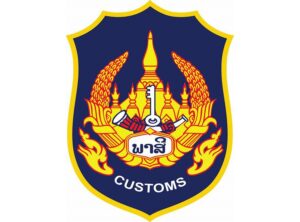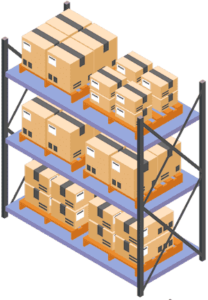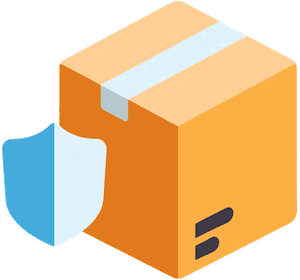Packing a camel for a journey across the desert might be easier than shipping goods between Qatar and Laos, but that's why we're here. The maze of tariffs, surcharges, and customs regulations in both countries can frustrate even the most seasoned business owners. This destination guide aims to demystify this process, presenting a detailed analysis of various freight options like air, sea, and road alongside critical issues like customs clearance, duties, and taxes. We've tailored our advice to help your business efficiently navigate such complexities, reducing your stress and potential costs. If the process still feels overwhelming, let DocShipper handle it for you! As your trusted international freight forwarder, we turn your shipping challenges into resounding successes.
Which are the different modes of transportation between Qatar and Laos?
Transporting goods from the sandy dunes of Qatar to the lush forests of Laos calls for an efficient, well-planned strategy. Ocean freight stands out due to the physical barriers; imagine sending a truck across multiple borders, it's like getting a camel through a narrow door! Airfreight, on the other hand, is like an eagle cutting straight through the skies; quick but expensive. The combo punch of sea and road transport could be your winning formula. In the end, it all boils down to what you're shipping, how fast you need it, and your budget. Let's dive deeper!
How can DocShipper help?
Facing challenges while shipping goods from Qatar to Laos? Take a deep breath and count on DocShipper. Whether it's customs clearance, administrative procedures, or transportation planning, we've got your back. Act now and receive a free estimate in less than 24 hours. Got a question? Our seasoned consultants are just a call away. Connect with us today!
DocShipper Tip: Sea freight might be the best solution for you if:
- You're dealing with hefty quantities or large-scale goods. Sea freight is your go-to for maximizing space without stretching your budget.
- Your cargo doesn't have an urgent deadline, as sea freight typically has longer transit times compared to air or rail.
- Your shipping routes are between major ports, allowing you to leverage the extensive global network of sea shipping lanes.
Sea freight between Qatar and Laos
Sea freight from Qatar to Laos unlocks immense potential in trade partnerships between these two countries, serving as the lifeblood of their bustling industrial sectors. Cargo vessels journey from Qatar's Hamad Port to the intermodal port in Vientiane, Laos—a cost-effective conduit for high-volume goods.
But twine this value with complexity, there's a challenging web to untangle. From import/export regulations to tricky logistics, businesses often fumble in the labyrinth of cross-border trade. Much like following a recipe while cooking a sumptuous feast, knowing the right techniques, ingredients, and most importantly, the sequence, certainly mitigates the risk of a culinary mishap. Stay tuned as we delve into the smart strategies, precise specifications, and best practices that will equip you to navigate this intricacy with ease, transforming the daunting process into smooth sailing. In this part, consider us your seasoned cookbook, simplifying the perplexing world of sea freight between Qatar and Laos.
Main shipping ports in Qatar
Port of Hamad
Location and Volume: Located in Umm Al Houl, the Port of Hamad is the largest port in Qatar, with an impressive shipping volume of 2 million TEUs annually.
Key Trading Partners and Strategic Importance: As the leading trade port in the country, Port of Hamad is crucial to Qatar's trade relationships. Some of the key trading partners include China, UAE, and India. The port's strategic importance is underlined by its state-of-the-art equipment and infrastructure.
Context for Businesses: If you're looking to expand your trade connections with the Middle East and beyond, the Port of Hamad can be a central part of your shipping strategy, owing to its deepwater capabilities and advanced container handling facilities.
Ras Laffan Port
Location and Volume: Situated in Al Khawr, Ras Laffan Port is a major exporter of liquefied natural gas (LNG), with a high volume of energy product shipments.
Key Trading Partners and Strategic Importance: Ras Laffan Port is mostly dedicated to trade relations with energy-hungry nations, such as China and India. Apart from these, it also has important trading ties with Japan and South Korea.
Context for Businesses: If you operate in the energy sector and looking to bolster your ties with energy-centric markets, Ras Laffan Port is an asset you can’t afford to miss. Its comprehensive facilities make it a crucial part of any logistics strategy aimed at energy exports.
Mesaieed Port
Location and Volume: Located in the city of Mesaieed, this port is the primary site for Qatar's petrochemical industries, with a substantial volume of petrochemical, crude, and refined product shipments.
Key Trading Partners and Strategic Importance: The port's main trading partners are located across Asia, including China and Taiwan, where the demand for petrochemical products is high.
Context for Businesses: If your logistics strategy is geared towards petrochemicals, the Mesaieed Port could play a crucial role, given its specialized petrochemical facilities and proximity to many of Qatar's leading petrochemical producers.
Main shipping ports in Laos
The Vung Ang Port
Location and Volume: The Vung Ang Port is located in the province of Ha Tinh. This port, Laos' primary maritime access point, is essential for facilitating the country's export sector, handling a shipping volume of over 6 million TEUs annually.
Key Trading Partners and Strategic Importance: Vung Ang Port mainly trades with ASEAN countries, China, and Japan. Its strategic importance lies in its proximity to other important markets in the region, creating a dynamic economic and logistical gateway.
Context for Businesses: If you're looking to tap into Southeast Asian markets or reach other significant economies in the region, Vung Ang Port can serve as a crucial hub in your logistics chain, given its high handling capacity and strategic geographical position.
The Savannakhet Dry Port
Location and Volume: The Savannakhet Dry Port is in the province of Savannakhet and serves primarily as a transshipment port for landlocked Laos, dealing with around 500,000 TEUs annually.
Key Trading Partners and Strategic Importance: Savannakhet Dry Port's primary trading partners are Thailand and Vietnam. Their strategic importance stems from their role in facilitating smooth and efficient overland transport across the region.
Context for Businesses: If your shipping strategy involves over-road transport to or from Thailand and Vietnam, Savannakhet Dry Port can play a vital role given its seamless overland transshipment services and close proximity to these markets.
The Boten Dry Port
Location and Volume: The Boten Dry Port located in Luang Namtha Province primarily serves the overland trade route to China. It manages about 200,000 TEUs each year.
Key Trading Partners and Strategic Importance: Boten Dry Port's main trading partner is China. Being situated near the Laos-China border provides a strategic advantage, making it an essential link for Laos' export-oriented businesses seeking to tap into the vast China market.
Context for Businesses: If your business involves frequent shipping activities to and from China, Boten Dry Port offers an ideal strategic position, making it a potential cornerstone for your supply chain strategies into the Chinese market.
The Thanaleng Dry Port
Location and Volume: The Thanaleng Dry Port, situated near the capital city, Vientiane, is designed primarily for goods transshipment with a handling volume of around 50,000 TEUs per year.
Key Trading Partners and Strategic Importance: Thanaleng's key trading partners are the nations of ASEAN. They serve a strategic role in efficiently moving goods across the border into Laos from Vientiane.
Context for Businesses: If your shipping needs heavily revolve around the ASEAN region, Thanaleng Dry Port can provide an efficient logistics solution due to its unique positioning and smooth trans-border movement of goods.
The Pakse Dry Port
Location and Volume: The Pakse Dry Port located in Champasak Province manages about 50,000 TEUs annually and provides critical land-based logistics for southern Laos.
Key Trading Partners and Strategic Importance: Pakse Dry Port mainly trades with Thailand and Cambodia. This port holds strategic significance due to its facilitation of trade activities in the economically growing region of Southern Laos.
Context for Businesses: If your business pursuits involve extensive shipping to or from Thailand and Cambodia, Pakse Dry Port can significantly simplify your logistic processes, given its strategic position in southern Laos and its strong connections with these countries.
Should I choose FCL or LCL when shipping between Qatar and Laos?
Shipping goods between Qatar and Laos? Deciding whether to ship by full container load (FCL) or less than container load (LCL), otherwise known as consolidation, can make or break your shipping experience. It's a paramount choice that influences cost, delivery timelines, and the overall success of your logistics process. Embark on this voyage with us as we demystify FCL and LCL, setting sail to empower you to make a well-informed decision tailored to your unique shipping needs. Get ready to plunge into the oceans of shipping wisdom!
LCL: Less than Container Load
Definition: LCL, or Less than Container Load, refers to a method of shipping that groups different shipments to fill a single container. This consolidation approach allows shippers to leverage the unused space in a container which can be shared with other shippers' goods.
When to Use: LCL shipping is often a more flexible and budget-friendly choice for low volume shipments. This method is particularly advantageous when your cargo is less than 13-15 CBM (Cubic Meters). By not having to pay for the entire container, you can ship goods as needed, providing cost savings and reducing risk of expedited or delayed shipments.
Example: Let’s consider a business that needs to ship 10 CBM of goods from Qatar to Laos. With LCL shipment, they would share container space with other businesses, rather than paying for and filling an entire container themselves. This allows the business to ship their product at a fraction of the cost of a full container.
Cost Implications: While the rate per CBM might be slightly higher with LCL freight compared to FCL (Full Container Load), the overall costs will likely be lower for small volume shipments. Shippers also avoid hefty fees associated with storing excess inventory. Remember, the goal is to optimize logistics, and the key is to strike a balance between cost and fit-for-purpose service.
FCL: Full Container Load
Definition: Full Container Load (FCL) shipping is a method where a shipper rents an entire container (20'ft or 40'ft) for moving goods. It offers the convenience of having a whole container for your cargo, providing added security because your package won't be mixed with other shippers' cargo.
When to Use: You would typically go with FCL shipping when your cargo size is more than 13-15 cubic meters (CBM). This makes it a viable and cheap option for high volume shipments because the cost per unit decreases as the volume increases.
Example: Consider a business that needs to transport a large quantity of heavy machinery from Qatar to Laos. Given the size and volume, using an FCL container ensures that the cargo remains undisturbed from origin to destination.
Cost Implications: While the FCL shipping quote is higher than Less than Container Load (LCL), on a per unit basis it becomes more cost efficient for larger volumes. Furthermore, FCL minimizes the risk of potential theft or damage associated with shared containers, possibly saving costs indirectly.
Unlock hassle-free shipping
Dive into hassle-free cargo shipping with DocShipper! As your trusted freight forwarder, we alleviate the complexities within the labyrinth of international trade. Let our ocean freight experts assist in determining whether cargo consolidation or a full container is the best strategy, depending on the nature of your goods, cost concerns, and timelines. Ready to take the plunge into simplified shipping between Qatar and Laos? Contact us for a free, no-strings-attached estimate today!
How long does sea freight take between Qatar and Laos?
For sea freight, transportation between Qatar and Laos typically encompasses an extended timeline due to the varying influential factors, such as the specific ports used, the weight of the shipment, and the nature of the goods being shipped. To get an exact transit time tailored specifically to your needs, it would be best to consult with a trusted freight forwarder such as DocShipper.
Regarding average transit times, the following table offers an overview of expected sea freight times between the key ports in both countries:
| Port of Qatar | Port of Laos | Transit time in days |
| Hamad Port | Savannakhet | 12 |
| Umm Said | Vientiane | 13 |
*Please note, exact transit times can vary and for the most accurate information, please consult your freight forwarder.
How much does it cost to ship a container between Qatar and Laos?
Determining the exact shipping cost for a container from Qatar to Laos can be like finding a needle in a desert sandstorm. But, don't worry; our guide is here to help. Ocean freight rates generally fall within a wide bracket, due to variables such as Points of Loading and Destination, the carrier involved, the goods being transported, and the rhythm of monthly market fluctuations. While we can't pin down a specific range here, we assure you that our shipping specialists are steadfastly committed to helping you decipher these numbers. They'll collaborate with you on a case-by-case basis, working tirelessly to provide the best rates tailored to your needs. So, while the waters might seem choppy, rest assured that we're here to smooth out your shipping journey.
Special transportation services
Out of Gauge (OOG) Container
Definition: An OOG container is specifically designed for items that can't fit in standard shipping containers, due to their size or shape.
Suitable for: Out of gauge cargo that exceeds the dimensions of standard containers.
Examples: Machinery parts, large industrial equipment, construction materials.
Why it might be the best choice for you: If your cargo doesn't confine to standard dimensions, using OOG will ensure safe and efficient transportation.
Break Bulk
Definition: This involves shipping goods individually, bundled or in crates, instead of in a container. Break bulk was the most common method of shipping before the advent of containerization.
Suitable for: Oversized and heavy goods such as vehicles or machinery that can't be easily containerized.
Examples: Wind turbines, construction equipment, wooden furniture, steel plates.
Why it might be the best choice for you: If you ship loose cargo load that's too chunky or heavy for traditional containers, break bulk is a reliable alternative.
Dry Bulk
Definition: Dry bulk refers to shipping commodities in large, unpackaged quantities. The goods are loaded directly into the vessel's hold.
Suitable for: Granular and dry materials, such as coals, grains, or minerals.
Examples: Sand, cement, coal, sugar, fertilizers.
Why it might be the best choice for you: Dry bulk works best if you have significant quantities of granular materials to move across the sea.
Roll-on/Roll-off (Ro-Ro)
Definition: This term describes vessels designed to carry wheeled cargo, where vehicles roll on and off the ro-ro vessel on their own wheels or using a platform vehicle.
Suitable for: All types of motor vehicles and machinery.
Examples: Cars, trucks, tractors, trailers, buses.
Why it might be the best choice for you: If you need to transport vehicles or heavy machinery between Qatar and Laos, the Ro-Ro method is cost-effective and efficient.
Reefer Containers
Definition: These are refrigerated containers used to transport temperature-controlled cargo.
Suitable for: Perishable goods that need specific temperature conditions.
Examples: Fruits, vegetables, meat, fish, dairy products, pharmaceuticals.
Why it might be the best choice for you: If you ship sensitive goods that require controlled temperatures, reefer containers are your best option to maintain the goods' quality upon arrival.
Need a little more guidance or ready to ship? DocShipper can make the process easier and more efficient. Don't hesitate to contact us. You can obtain a free shipping quote in less than 24 hours. Your global shipping needs are our priority.
DocShipper Tip: Air freight might be the best solution for you if:
- You're up against the clock or have a non-negotiable delivery date. Air freight is your fastest bet for meeting tight timelines.
- Your shipment is on the smaller side, falling below 2 CBM. Air freight is particularly well-suited for compact cargo loads.
- Your goods are destined for locations that aren't well-served by maritime or rail options. Air freight expands your reach by connecting you to a vast array of international airports.
Air freight between Qatar and Laos
When shipping from Qatar to Laos, air freight offers the fastest, most reliable alternative. Imagine your business dealing in small yet invaluable items like biomedical devices or diamond jewelry. Flying them out is like getting an express ticket -quick and efficient. However, it's a road filled with bumps and trips if not done right. Did you know many businesses lose money because they slip on the finer details? They get their weight calculations wrong or overlook crucial best practices, burning a hole in their pockets. But don't worry - we'll delve into these common pitfalls and how to avoid them to ensure your air freight journey is smooth sailing all the way.
Air Cargo vs Express Air Freight: How should I ship?
Selecting how to ship goods between Qatar and Laos can send your head spinning faster than a jet engine - but don't worry, we've got your back! Consider this: air cargo places your merchandise in the belly of commercial airlines, while express air freight whisks your goods away in an exclusive, dedicated plane. The choice primarily hinges on the weight of your consignment, speed of delivery and, of course, budget considerations. So let's dive a bit deeper, shall we?
Should I choose Air Cargo between Qatar and Laos?
Air cargo is a reliable and cost-effective choice for shipping goods between Qatar and Laos, especially relevant if your cargo weighs more than 100/150 kg (220/330 lbs). Prominent airlines offering this freight option include Qatar Airways and Lao Airlines. Keep in mind that while their pricing may suit your budget requirements, transit times might be longer due to fixed schedules. Check these airlines' websites for exact timings and rates. Remember, when managing a tight budget, air cargo might be just the solution you are looking for.
Should I choose Express Air Freight between Qatar and Laos?
Express air freight is a premium service, utilizing dedicated cargo planes devoid of passengers. Its edge lies in handling lightweight cargo under 1 CBM or 100/150 kg (220/330 lbs). For companies sending time-sensitive or small consignments, firms like FedEx, UPS, or DHL provide stalwart solutions. Quicker than traditional air freight, express services offer integrated customs clearing, providing an expedited and seamless shipping experience. If you're dealing with urgent shipping needs or smaller packages, this might be your solution for transporting goods between Qatar and Laos.
Main international airports in Qatar
Hamad International Airport
Cargo Volume: Hamad International Airport in Doha, Qatar, stands as a significant player in the international freight market, handling more than 2.3 million tonnes of cargo annually.
Key Trading Partners: Key trading partners mainly include China, the USA, United Arab Emirates, Saudi Arabia, and India.
Strategic Importance: Hamad International Airport holds a strategic position in Middle East being a central gateway for global air freight along key East-West shipping routes. Its proximity to major Middle Eastern markets enhances its importance.
Notable Features: With hi-tech security and safety measures, the airport possesses an Automated Storage and Retrieval System (ASRS) for speedy delivery of air cargo. It boasts advanced temperature-controlled facilities critical for transporting pharmaceutical and perishable goods.
For Your Business: Leveraging Hamad International Airport for your shipments could mean access to faster, more efficient trade routes, especially if your business is involved in trading with Middle Eastern markets. The advanced technologies at this airport ensure that your cargo, especially sensitive goods, are adequately protected and handled.
Main international airports in Laos
Wattay International Airport
Cargo Volume: Wattay International Airport deals with more than 60,000 tonnes of cargo annually, making it a significant player in the logistics field in the Southeast Asia region.
Key Trading Partners: Its trading partners include countries from around the world, with a focus on China, Thailand, Vietnam, and other ASEAN countries. There are significant imports and exports between these territories.
Strategic Importance: The airport is strategically located in Vientiane, the capital and largest city of Laos, thus providing smoother delivery to the largest population density in the nation. It plays a key role in national and international freight movements.
Notable Features: The airport has all modern facilities with its cargo handling unit equipped with cold storage, well-ventilated storage facilities, and mechanized handling equipment, which ensures the smooth movement of varied cargo types.
For Your Business: If trade with ASEAN nations forms a significant part of your business, Wattay International Airport could be smooth sailing for your consignments, with its connectivity and modern cargo infrastructure. The establishment handling diverse cargo types also presents an opportunity for you to ship a wide variety of products.
Luang Prabang International Airport
Cargo Volume: Luang Prabang International Airport possesses less cargo volume than Wattay, dealing with approximately 20,000 tonnes annually. It's a smaller airport but is still an important cargo hub in Laos.
Key Trading Partners: Key trading partners are similar to those of Wattay. However, Luang Prabang International Airport exhibits a stronger trade connection with countries like China, France, Thailand, and South Korea.
Strategic Importance: Situated in the country's northern region, this airport serves as the primary gateway for businesses looking to move goods in and out of the north. It is also a pivotal point for operations connecting businesses to northern ASEAN regions.
Notable Features: Luang Prabang International Airport features a single runway and has a cargo handling area with a complete suite of facilities to facilitate the movement of diverse types of cargo.
For Your Business: Leveraging Luang Prabang International Airport could be a smart move if your business is focused on the north, including areas served by the airport. The direct links to North Asia could reduce lead times for your shipments and further improve the efficiency of your supply chain.
How long does air freight take between Qatar and Laos?
Shipping goods from Qatar to Laos by air freight generally takes between 3 to 5 working days. However, this average transit time may vary depending on a range of factors. The specific airports used, the weight, and the nature of the goods in transit can all influence shipping times. To get a precise and accurate estimate tailored to your individual shipping needs, a consultation with a freight forwarder like DocShipper is highly advisable.
How much does it cost to ship a parcel between Qatar and Laos with air freight?
Estimating a comprehensive shipping rate from Qatar to Laos by air freight is somewhat complex due to many variables. A broad average can range from $3 - $8 per kilogram. However, this isn't an exact quote. Factors like actual distance to and from airports, the weight and dimensions of your parcel, as well as the nature of the goods can impact the cost.
We know these variables can seem overwhelming, but rest assured, our team dedicates themselves to providing the best possible rates, crafted on a case-by-case basis to meet your specific shipping needs. Get in touch today and receive a free, no-obligation quote in less than 24 hours!
What is the difference between volumetric and gross weight?
Gross weight refers to the actual physical weight of a shipment, including the packaging, pallets and other wrapping materials. Volumetric weight, on the other hand, is a measure of the total space your shipment occupies or its 'dimensional weight.'
For Air Cargo, the volumetric weight is calculated using the formula: Length (cm) x Width (cm) x Height (cm) / 6000. You measure each dimension at its maximum point of the package, sum them up, and then divide by 6000.
Express Air Freight services use a bit of a different formula for volumetric weight: Length (cm) x Width (cm) x Height (cm) / 5000.
To illustrate, suppose you're shipping a box with dimensions of 40cm x 30cm x 20cm that weighs 7 kg. For Air Cargo, the volumetric weight calculates to: (40cm x 30cm x 20cm) / 6000 = 4 kg (or 8.8 lbs). For Express Air Freight, the same box would have a volumetric weight of: (40cm x 30cm x 20cm) / 5000 = 4.8 kg (or 10.6 lbs).
Ultimately, these calculations matter because freight charges are largely based on the principle of chargeable weight. Airlines will determine the cost based on either the gross weight or the volumetric weight of the shipment - whichever is higher. This means if your shipment is heavy but small, you're charged by its physical weight. If it's light but big, you're charged by its volumetric weight. This principle assures that space taken up in the cargo area is paid for effectively.
DocShipper tip: Door to Door might be the best solution for you if:
- You prioritize a smooth, hassle-free shipping experience from start to finish. Door-to-door services manage the entire journey, from initial collection to ultimate delivery.
- You appreciate streamlined communication and would rather deal with one person. A dedicated agent is usually assigned to oversee every detail of your door-to-door shipment.
- You want limit the number of touchpoints for your cargo. Door-to-door services reduce the frequency of transitions between various transport methods, thereby lowering the likelihood of damage or loss.
Door to door between Qatar and Laos
Dive into the convenience of Door to Door shipping: a pivotal international logistics service that transports your goods from the heart of Qatar straight to the doorstep in Laos. This straightforward freight solution is all about efficiency, saves time, and removes hassles. Right for you? Let's unpack the advantages of this invaluable service. So, grab your notepads, folks, let's dive in!
Overview – Door to Door
Shipping from Qatar to Laos? Embrace Door to Door shipping; our most requested service at DocShipper. While international logistics can be daunting, this service takes the hassle off your plate. It covers every stage - from pickup to final delivery. The convenience is unparalleled but bear in mind, costs can be higher than other methods. Despite this, the peace of mind knowing your goods are handled by experts from origin to destination is why many opt for this seamless, stress-free solution. Rest assured, it's designed to simplify your shipping experience.
Why should I use a Door to Door service between Qatar and Laos?
Pondering how to ship your precious cargo from Qatar to Laos without losing your sanity? Cue the spectacular benefits of Door to Door services!
1. Work-Free Logistics: No need to transform into an overnight shipping guru. Freight forwarders with door to door service relieve you from the complexities of logistics. They seamlessly arrange pickup from your premises in Qatar, transport it through air, sea, or road, clear it through customs, and ultimately deliver it straight to your recipient in Laos.
2. Timely Delivery: Timelines are sacred in your business, and Door to Door services pay homage to this fact. Their strong network of linkages ensures that your package arrives exactly when it's supposed to, so you can keep your urgent commitments without a hitch.
3. Specialized Care for Complex Cargo: No need to stress too much on how to handle fragile or complex cargo. Door to Door services come with a promise of customized, focused care to ensure your precious freight reaches its destination unscathed.
4. End-to-End Convenience: Forget about organizing different carriers for different shipping legs. A Door to Door service becomes your single point of contact, eliminating miscommunication and handling intricate trucking routes till its final destination.
5. Peace of Mind: Of course, the cherry on top is the complete peace of mind you get. Trusting a Door to Door service means entrusting your entire shipment journey to experts who have done this hundreds of times, so you can kick back and focus on what you do best - your business!
In essence, think of Door to Door service as your tireless, multi-tasking logistics superhero, always saving the day when it comes to your international shipment needs. You can never go wrong!
DocShipper – Door to Door specialist between Qatar and Laos
Experience seamless door-to-door shipping from Qatar to Laos, as DocShipper takes charge of your logistics needs from beginning to end. Our team of knowledgeable experts manage everything – from packing and transport to customs and choosing the optimal shipping method. With a dedicated Account Executive by your side, your shipping journey has never been smoother. Reach out for a free, no-obligation estimate in under 24 hours or connect with our consultants anytime. Trust us, it's shipping made simple.
Customs clearance in Laos for goods imported from Qatar
Navigating through the realm of customs clearance - the regulatory approval process for imported goods - can be a dizzying experience. Particularly when importing goods from Qatar to Laos, a labyrinth of potential surprises awaits, from sudden fees to unexpected restrictions. It's crucial to grasp the intricacies of customs duties, taxes, and licenses to prevent your merchandise from being trapped at the border. Misunderstanding quotas can lead to disastrous outcomes. But worry not, the ensuing sections of this guide will dissect these elements in detail. Moreover, DocShipper is ready to support you throughout the process for all types of goods. To accurately budget your project, reach out to our team providing these mandatory details: origin, value of goods, and HS Code. Your global shipping journey just got easier!
How to calculate duties & taxes when importing from Qatar to Laos?
Understanding the estimation of duties and taxes when importing goods from Qatar to Laos is paramount in ensuring smooth customs clearance, and ultimately, successful delivery of your goods. The key components in estimating these duties include determining the origin country of the goods, the Harmonized System (HS) Code of the products, the customs valuation, the tariff rate applicable, and any additional taxes or fees that may apply.
Begin by pinpointing the country where the goods under consideration were produced or manufactured, as this forms the first decisive step in the process. This seemingly straightforward information can have significant impact on the duties and taxes applied, and therefore the ultimate cost of your freight. Stay tuned and we'll break down how to navigate the rest of this process - making international shipping less of a mystery and more of a viable option for your business expansion.
Step 1 - Identify the Country of Origin
To get your goods from Qatar to Laos smoothly, your initial map is the Country of Origin, a crucial factor in taxation. Five main reasons make this step a must:
1. Differentiating product source: Labeling goods as 'Made in Qatar' separates them from similar items from other countries. This is important for customers and customs.
2. Complying with trade rules: Knowing the Country of Origin keeps you compliant with international trade laws and regulations.
3. Handling customs duties: An understanding of trade agreements between Qatar and Laos, like the Free Trade Agreement, impacts customs duties. Products of Qatari origin may enjoy lowered or no tariffs.
4. Applying import restrictions: Some imports to Laos face restrictions. Get familiar with these particulars to avoid mishaps.
5. Completing customs paperwork: The Country of Origin appears on all essential customs documents. Correct identification paves the way for a smoother clearance process.
Bear in mind that duties and taxes depend on the nature of your goods and the trade agreement details. So, always cross-check details with competent agencies. Having this information beforehand keeps you ahead, saving you both time and money. Happy shipping!
Step 2 - Find the HS Code of your product
The Harmonized System (HS) Code is a universally recognized language of numbers and digits that's used to classify your products in the world of international trade. When shipping goods from one country to another, Custom authorities use these codes to quickly understand what is in a parcel so that they can apply the correct taxes and duties.
Finding your product's HS code might be simpler than you think. If you're working with a supplier, they should be well-acquainted with the products they're dealing with and should have the HS Code readily available. This is generally the easiest and most efficient way to secure the correct code.
However, if this is not a viable option for you, don't worry—we have a straightforward process that will help you discover the HS code for your product easily. This process involves the use of an online tool known as the Harmonized Tariff Schedule. Here's how it works in three simple steps:
1. Access the Harmonized Tariff Schedule tool.
2. Type the name of your product into the provided search bar.
3. Check the 'Heading/Subheading' column — this is where you'll find the HS code for your product.
Please note, ensuring the accuracy of your product's HS Code is crucial. Entering an incorrect code could lead to processing delays, potential fines, and other issues with Customs authorities.
Having completed the steps above, you should now be prepared to identify the HS code for your product with confidence. In addition, here's an infographic showing you how to read an HS code. This guide should equip you with the necessary insights required to navigate the complexities of international trade effectively.
Step 3 - Calculate the Customs Value
Understanding customs value can seem like a complex battleground, but let's unravel it together. Imagine you're importing eco-friendly straw baskets from Qatar to Laos. The customs value isn't just the buying price of your baskets. Here's where things get interesting.
The customs value, instead, is the CIF value; the Cost of goods, Insurance, and Freight costs, all put together in one figure. If your baskets cost $1000, international shipping is $200 and insurance costs $50, then your customs value isn't $1000, but $1250. This is the amount you'll need for calculating the duty and tax in Laos. Calculating the right figure is crucial for your payment at borders, and ultimately, the economics of your business. So, remember: your invoice value is just part of the story. Embrace the CIF story instead!
Step 4 - Figure out the applicable Import Tariff
An import tariff is essentially a tax levied on imported goods. As an element of international trade, this tariff is imposed by the country receiving the goods, which in this case is Laos. The type of tariff used in Laos is Ad Valorem, a percentage of the good's value.
To identify your applicable import tariff, begin with the Harmonized System (HS) code for your product. For our example, let's assume you're importing plastic tableware from Qatar with the HS code 392410.
Once you have this code, visit the customs department of Laos or check with your freight forwarder to get your specific tariff rate. Let's assume it's a rate of 15%.
Calculating the import duties requires more than just your product's value. Combine your product's value with your insurance and freight (CIF) costs. So, if the value of your plastic tableware is $10,000, with freight and insurance costing $1000, your CIF is $11,000.
Applying the 15% tariff on this total gives us your import duties, 15% of $11,000 which equals $1650.
Remember, these figures are all hypothetical and meant to help you understand the process. For accurate values, engage a trusted freight forwarder or consult your local customs office. While this process might seem challenging, understanding it can offer significant advantages in managing your shipping costs.
Step 5 - Consider other Import Duties and Taxes
When you import goods from Qatar to Laos, apart from the standard tariff rate, you might have to deal with additional import duties. These additional costs depend on both the product's nature and its country of origin. Let's delve into a few examples.
Consider the Excise Duty. It's charged on specific goods like alcohol and tobacco. To illustrate, if you're importing a crate of Qatari tobacco, the Excise Duty could be an extra 30% of its value. Also note, there can be Anti-Dumping Taxes, aimed at protecting domestic industries against unfair competition. If, for instance, you're importing steel at a value significantly under market rate, an extra 25% Anti-Dumping Tax may apply.
The most significant additional import cost to bear in mind is the VAT. For instance, Laos currently imposes a 10% VAT rate on imported goods. The calculation formula could be: (cost of goods + shipping + insurance) x VAT rate.
Remember, these are merely examples, the exact rates may vary. But understanding these additional costs can help you plan better and avoid surprises when your shipment lands in Laos.
Step 6 - Calculate the Customs Duties
Calculating customs duties for goods imported from Qatar to Laos, involves few key variables: customs value, VAT, and potential anti-dumping taxes and excise duty.
Example 1: You've imported a consignment worth $10,000, with a duty rate of 5%, the basic customs duty will be $500. No VAT applicable here.
Example 2: For a consignment worth $15,000 with a VAT rate of 10%, the duty is $750. The total amount you must pay, including VAT, will be $837.50 ($750 + ($15,00010%) = $837.50).
Example 3: Let's say imported goods worth $20,000 are subject to anti-dumping taxes of $1,000 along with VAT of 8% and excise duty of 2%. The total customs amount will be $2,770. That's $1,600 for duty plus VAT ($20,0008%), $400 excise duty ($20,0002%), and $1,000 anti-dumping tax.
Epitomizing our deep understanding of this complex process, DocShipper offers world-class customs clearance services. With us, you ensure accurate estimations, avoiding overspending, and facilitating smooth cross-border logistics. Why juggle various tax and duty rates when we're here to streamline it all for you? Contact us for a hassle-free quote within 24 hours.
Does DocShipper charge customs fees?
As a customs broker in Qatar and Laos, DocShipper ensures transparent charges for you. We handle the complexities of customs clearance, for which fees apply. However, these charges are separate from customs duties and taxes that go directly to the government. We furnish you with the official documents from customs to illustrate this distinction. Think of it as a restaurant bill – while we serve the 'meal' (organizing the shipping process), the 'tax' (customs duties) goes directly to the government. DocShipper focuses on keeping your costs minimal and transactions transparent.
Contact Details for Customs Authorities
Qatar Customs
Official name: The General Authority of Customs in Qatar
Official Website: http://www.customs.gov.qa/
Required documents for customs clearance
Untangling the tangled knot of customs documentation is no small feat. To give you a helping hand, we're going to guide you through the need-to-knows of the Bill of Lading, Packing List, Certificate of Origin, and crucial Documents of Conformity (CE Standard).
Bill of Lading
If you're shipping goods between Qatar and Laos, your Bill of Lading (B/L) is your golden ticket. This crux document seals the deal on ownership transition. It's at this point your merchandise formally changes hands, so ensure everything is crystal clear to avoid hiccups. Have you considered going digital? With electronic telex release, you'll fast-track paper processing time, making it a savvy choice for those time-sensitive shipments. For air cargo, the Air Waybill (AWB) takes the B/L's place - just another formality on the shipping journey. The bottom line? Accurate B/L or AWB equals hassle-free customs clearance. Keep these documents tidy for a smooth shipping experience!
Packing List
Navigating customs between Qatar and Laos can be like wading through treacle if you're not prepared. Remember your Packing List? Don’t underestimate it. It's your guide map to successful shipping. This document, whether for sea or air freight, lays out a clear picture of what's in your shipment - from the weights and volumes to the nature of goods. You're responsible for its accuracy, which is paramount. Imagine arriving at the customs gate only to find a mismatch between the declared and actual goods. Nightmare, right? Spare yourself the drama. A precise Packing List can expediently walk your goods through the choppy waters of customs. This document is not just an itemisation. It's a ticket to a smoother, swifter shipping between Qatar and Laos.
Commercial Invoice
When shipping from Qatar to Laos, your Commercial Invoice is an essential customs clearance document. It must detail the total price of goods, quantity, description, shipper, and receiver details - transparency is key. Misalignments in this document can cause delays and complications with Laos' customs, disrupting your shipping flow. A tip - ensure your invoice reflects identical information on all other shipping documents, it simplifies the customs clearance process. So, if you are trading tech gadgets or luxury textiles, remember that this document is the backbone of your shipping operation. Make it accurate, detailed, and consistent. You'll navigate the customs seas much smoother!
Certificate of Origin
Navigating customs between Qatar and Laos? The Certificate of Origin, a critical document, can be your secret weapon. This essential piece of paperwork vouches for where your goods were manufactured— whether it's a batch of spices from Madinat Khalifa or handmade crafts from Luang Prabang. Why should you care? Well, some goods may qualify for preferential customs duty rates based on their origin. Imagine shaving off percentage points from lofty customs fees! Remember, it’s not about just mentioning Qatar or Laos, but the exact place of manufacture. For instance, an electronics shipment with components from multiple countries will need explicit details. Get those nitty-gritty geographical facts in line and customs could turn from a hindrance to a breeze. Time to let the Certificate of Origin smooth your shipping journey!
Get Started with DocShipper
Navigating customs can seem like an intimidating maze. At DocShipper, we ensure your Qatar-Laos shipping journey is stress-free. Let us handle every detail of the customs clearance with competence and care. Want peace of mind? Contact us now - within 24 hours, we'll provide you with a free quote that crafts a seamless path through customs for your freight. Your global shipping doesn't need to be complex, let's simplify it together!
Prohibited and Restricted items when importing into Laos
Before importing goods into Laos, it's important to be aware of what's off-limits. Missteps can lead to costly delays or fines. We'll help you avoid pitfalls by outlining the items Laos restricts or outright bans. Let's get started!
Restricted Products
- Pharmaceuticals: You will need to apply to the Ministry of Health for a pharmaceutical import license.
- Animals and Animal Products: Licenses are required to import any animals or animal products into Laos. You have to connect with the Department of Livestock & Fisheries, Ministry of Agriculture and Forestry.
- Pesticides: To import pesticides, it is obligatory to submit a request to the Ministry of Agriculture and Forestry to obtain permission.
- Cryptocurrency hardware: You need to contact the Bank of Lao PDR for any regulations regarding the import of cryptocurrency hardware into Laos.
- Radioactive materials: For shipping any items that contain radioactive materials, engage with the Ministry of Science and Technology to secure a permit.
- Military equipment: To bring any military or defense-related equipment into Laos, you are required to communicate with and get clearance from the Ministry of Defense.
Keep in mind that while this list covers a number of common categories, it's not exhaustive and other products may also require specific licenses or permits. It's always crucial to confirm the latest regulations before shipping to Laos.
Prohibited products
- Narcotics and psychotropic substances, excluding those specifically permitted by authorized health organizations
- All types of gambling equipment
- Products containing harmful biotic substances
- High-frequency radio equipment and radios set to military frequencies
- Poisonous chemicals and industrial waste harmful to health and the environment
- Obscene objects or publications
- Unauthorized wildlife and endangered species, any parts thereof, and products made from them under the CITES agreement
- Counterfeit goods and fake currency
- Weapons and explosives, excluding those specifically permitted by authorized defense organizations
- Alcohol and spirits with an alcohol content above the permitted level
- Unauthorized cultural artifacts and objects of significant cultural value
Are there any trade agreements between Qatar and Laos?
Currently, there are no Free Trade Agreements (FTAs) or Economic Partnership Agreements (EPAs) between Qatar and Laos. However, with both nations actively seeking trade expansion in Asia, future agreements may arise. Shipping your goods without any trade deals means navigating tariffs and duties, an additional cost factor to consider in your shipping strategy. Despite the absence of trade agreements, remember the potential benefits of future collaborations, such as potential railway lines for enhanced logistics. Stay alert and adaptable to take advantage of any emerging opportunities.
Qatar - Laos trade and economic relationship
Laos Exports to Qatar was US$107.9 Thousand, according to the United Nations COMTRADE database on international trade. Laos Exports to Qatar - data, historical chart and statistics - was last updated on July of 2024.
Both nations recognize the realms of opportunity in sectors like construction, services and agriculture. Their vibrant resource exchange, enriched by primary commodities such as Rubber and precious metals from Laos, and a diverse range of products from Qatar, keep the trade volume buzzing.
Mutual investments have seen a promising surge, with Qatari's FDI reaching $32 million lately. The intercontinental partners' relationship is a compelling tale of growth, unified in prosperity and partnership.
Your Next Step with DocShipper
When shipping between Qatar and Laos, let DocShipper handle the intricate process. From air freight to customs clearance, our expertise enables a seamless transition. Your goods will arrive, undisturbed, on time. No more sleepless nights. We're your solution. Ready to simplify your global shipping? Contact us now.
Additional logistics services
Discover the full breadth of our logistics prowess! Beyond shipping and customs, DocShipper manages your entire supply chain, simplifying your journey from supplier to consumer.
Warehousing and storage
Finding trustworthy warehousing in Qatar and Laos can be tricky, especially if your goods require temperature control. Don't let thermal mishaps melt your profits. Secure your goods in our top-tier, climate-controlled facilities and let peace of mind be part of your inventory. More info on our dedicated page: Warehousing.
Packaging and repackaging
Well-packaged goods are the beating heart of seamless shipping from Qatar to Laos. It safeguards the integrity of your products, be it fragile ceramics or hefty machinery. Trusting a reliable agent for packaging and repackaging can be the difference between a damaged good and a well-received one. Think about how vital an expertly wrapped antique vase can be or a carefully disassembled, then reassembled, piece of equipment. Your goods’ protection is paramount.
Cargo insurance
When it comes to safeguarding your goods during transit, cargo insurance is the real deal. Unlike fire insurance that only covers certain disasters, cargo insurance provides holistic cover, mitigating risks from theft, mishandling, and even severe weather. Think of it as a safety net for that exclusive silk shipment or valuable electronics, ensuring they arrive safe and sound. It's all about peace of mind.
Supplier Management (Sourcing)
Moving goods between Qatar and Laos? DocShipper is your go-to partner for sourcing and manufacturing in Asia and East Europe. We tackle the challenge of finding reliable suppliers, busting language barriers and steering the whole procurement process. Just like how we simplified goods delivery for ABC Widgets by acquiring quality parts from a Laos local supplier. Explore the specifics on our dedicated page: Sourcing services.
Personal effects shipping
Moving your treasured possessions between Qatar and Laos? Our Personal Effects Shipping service guarantees safe and flexible transport of your delicate or large items. Imagine your grandmother's hefty antique table or your favorite ceramic vase, handled and delivered with the utmost care, just as you would do it yourself. It's seamless and stress-free transport tailored to your specific needs.
Quality Control
Keeping goods up to snuff in transit from Qatar to Laos? That's where quality control comes in! Imagine inspecting a big shipment of handcrafted Qatari jewelry. Pre-shipping assessments ensure each piece meets design specs and quality benchmarks. No more worry about a tarnished reputation from defective pieces. This process, quite simply, is your secret weapon to winning customer trust every time. It's like your own personal security guard for product integrity!
Product compliance services
Complying with local regulations is a non-negotiable in import-export. Our Product Compliance Services ensure your goods are up to snuff. We run lab tests and secure certifications so you don't face hiccups at destination customs. Think of it like ensuring your electronic gadgets won't short-circuit on plug-in – sidestepping a costly ordeal.
FAQ | For 1st-time importers between Qatar and Laos
What is the necessary paperwork during shipping between Qatar and Laos?
For shipping goods from Qatar to Laos, the paperwork falls into two main categories: the ones we, DocShipper, handle and the ones you need to provide. We deal with the mandatory documents such as the bill of lading for sea freight or the air way bill if you choose air freight. Your responsibility involves providing us with your packing list and the commercial invoice, which we need to process your shipment effectively. Depending on your goods' nature, additional documents like the Material Safety Data Sheet (MSDS) or particular certifications may be required. Rest assured, we will guide you through this process to make it as smooth as possible.
Do I need a customs broker while importing in Laos?
Yes, using a customs broker is advisable when importing goods into Laos due to the complexity of interacting with customs authorities. The process requires adherence to specific rules, providing mandatory details, and dealing with intricate paperwork. At DocShipper, we ease your transport logistics by representing your cargo at customs for most shipments. Our experienced customs brokers navigate through these procedures, ensuring smooth and leading shipment process. Remember, the primary aim is to get your imports cleared without hiccups, thus eliminating delays and maintaining your business's efficiency.
Can air freight be cheaper than sea freight between Qatar and Laos?
We appreciate your query and it's important to note that the cost-effectiveness of air vs. sea freight between Qatar and Laos depends on various factors like route, weight, and volume of the consignment. When your cargo is less than 1.5 Cubic Meters or weighs under 300kg (approximately 660 lbs), air freight could indeed be a potentially cheaper and faster alternative. At DocShipper, we take all these factors into account to ensure you always benefit from the most competitive freight options. Rest assured, your dedicated account executive is committed to optimizing your shipment for the best possible value.
Do I need to pay insurance while importing my goods to Laos?
While we convey that insurance isn't mandatory for shipping goods, whether within boundaries or overseas, we thoroughly endorse getting your goods insured. Shipping, while monitored, is subject to a range of unpredictable incidents - damage, loss, theft, and more. Ensuring your goods have insurance coverage acts as a safety net against potential disruptions or losses, thereby safeguarding your interests. This holds true even when you're importing goods into Laos. Thus, we advocate for insurance not as a requirement, but as a precaution. Plan wisely!
What is the cheapest way to ship to Laos from Qatar?
For the most economical solution between Qatar and Laos, we recommend sea freight. Even though this option takes longer compared to air freight, its cost-effectiveness for larger volumes or non-urgent items is unrivaled. Keep in mind that customs clearance, duties, and transport to and from ports should also be incorporated into your overall cost calculation. It's also important to remember that all shipping modes carry their own requirements and procedures which we can help you navigate.
EXW, FOB, or CIF?
Choosing between EXW, FOB, or CIF largely depends on your relationship with your supplier. Remember, your supplier may not have a deep understanding of logistics, making it beneficial to have a logistics agent like us, DocShipper, handle at least the international freight and in-country processes. Typically, suppliers sell under EXW terms, meaning at their factory door, or FOB terms, which includes all local charges until the origin terminal. No matter the terms, we can provide a comprehensive door-to-door service making your shipping experience as smooth as possible.
Goods have arrived at my port in Laos, how do I get them delivered to the final destination?
If your goods arrive in Laos under our CIF/CFR incoterms, you must hire a customs broker or freight forwarder to clear goods at the terminal, pay import charges, and arrange delivery to the end destination. Alternatively, our team can manage this entire process if you opt for our DAP incoterms. It's best to confirm these details with your dedicated account executive at DocShipper.
Does your quotation include all cost?
Absolutely, our quotations strive for clarity and transparency. They cover all fees except duties and taxes at the destination. Should you need an estimate of these costs, your dedicated account executive can assist. Rest assured, we don't believe in hidden fees. We always aim to keep your budget in check and avoid unpleasant surprises.
